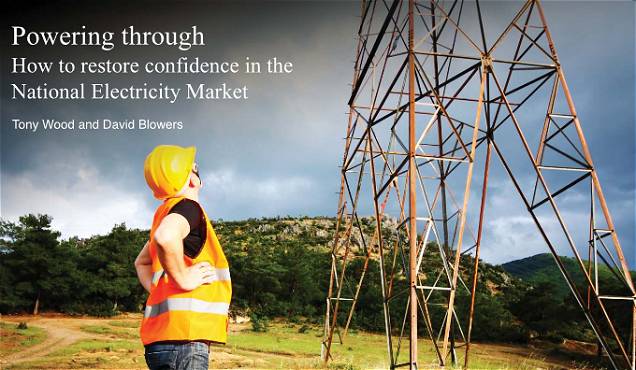
Keep calm but don’t carry on as is – Grattan Institute
A new report warns of the danger of politicians panicking over the situation with Australia’s National Electricity Market and ultimately pushing electricity prices higher.
Australia’s energy landscape is in the midst of rapid change. Coal fired power generation is falling out of favour due to climate concerns. Our gas production has increasingly been siphoned off beyond our shores; pushing up prices. Unconventional gas is less than popular.
Approximately 15 per cent of Australian homes now have solar panels on their roofs (2016), compared to less than 1 per cent just 10 years ago. The energy storage revolution is on our doorstep, utility scale solar energy is growing, and wind power has risen to be a significant electricity generation force.
Between all this and excruciating debates and mixed signals on climate related policy, the impact on Australia’s National Electricity Market has seen it descend into quite a mess – and more recently, rebellion against it.
“Powering through: how to restore confidence in the National Electricity Market,” from the Grattan Institute advises against state governments taking unilateral action on energy security.
“If governments take matters fully into their own hands, the results are likely to be painful: customers will pay more for their electricity, supply could become even less reliable, and Australia still may not reduce emissions as we have promised,” states the Institute.
The authors point to the South Australian Government’s go-it-alone power plan introduced to solve the state’s “energy crisis“, which they say threatens the NEM’s capacity to stimulate the new investment Australia requires to build economical, reliable and low-emissions electricity.
Describing the NEM as being at a crisis point, the report makes three general recommendations; which it then describes in greater detail.
- Policy makers should take action urgently, with the responsibility resting on the shoulders of the AEMC and the AEMO.
- Governments must agree on a credible emissions reduction policy that integrates with the National Electricity Market.
- The COAG Energy Council needs to identify and implement policies through Australia’s energy transition to secure a dependable supply of electricity.
With regard to addressing shortages should they occur, the authors say power generators need incentives for flexibility and quick response.
There should also be incentives to reduce system load for customers who curtail the amount of electricity they use during peak periods, they state.
Some progress is already being made on this front. Last week, the Australian Renewable Energy Agency announced it had joined forces with the Australian Energy Market Operator (AEMO) to pilot a demand response initiative in South Australia and Victoria to secure 100 megawatts of demand response capacity during extreme weather and unplanned outages.
The full Grattan Institute report can be viewed here (PDF).

 RSS - Posts
RSS - Posts



Speak Your Mind